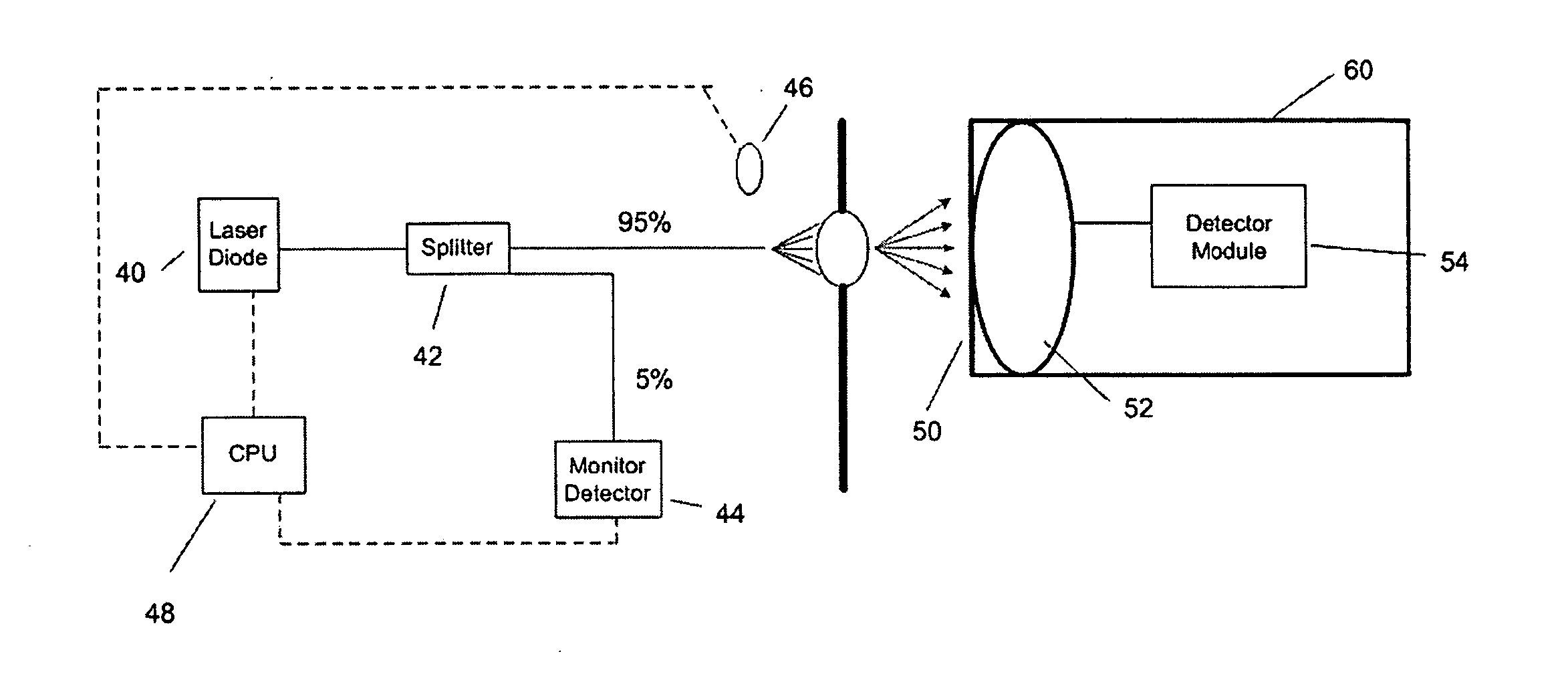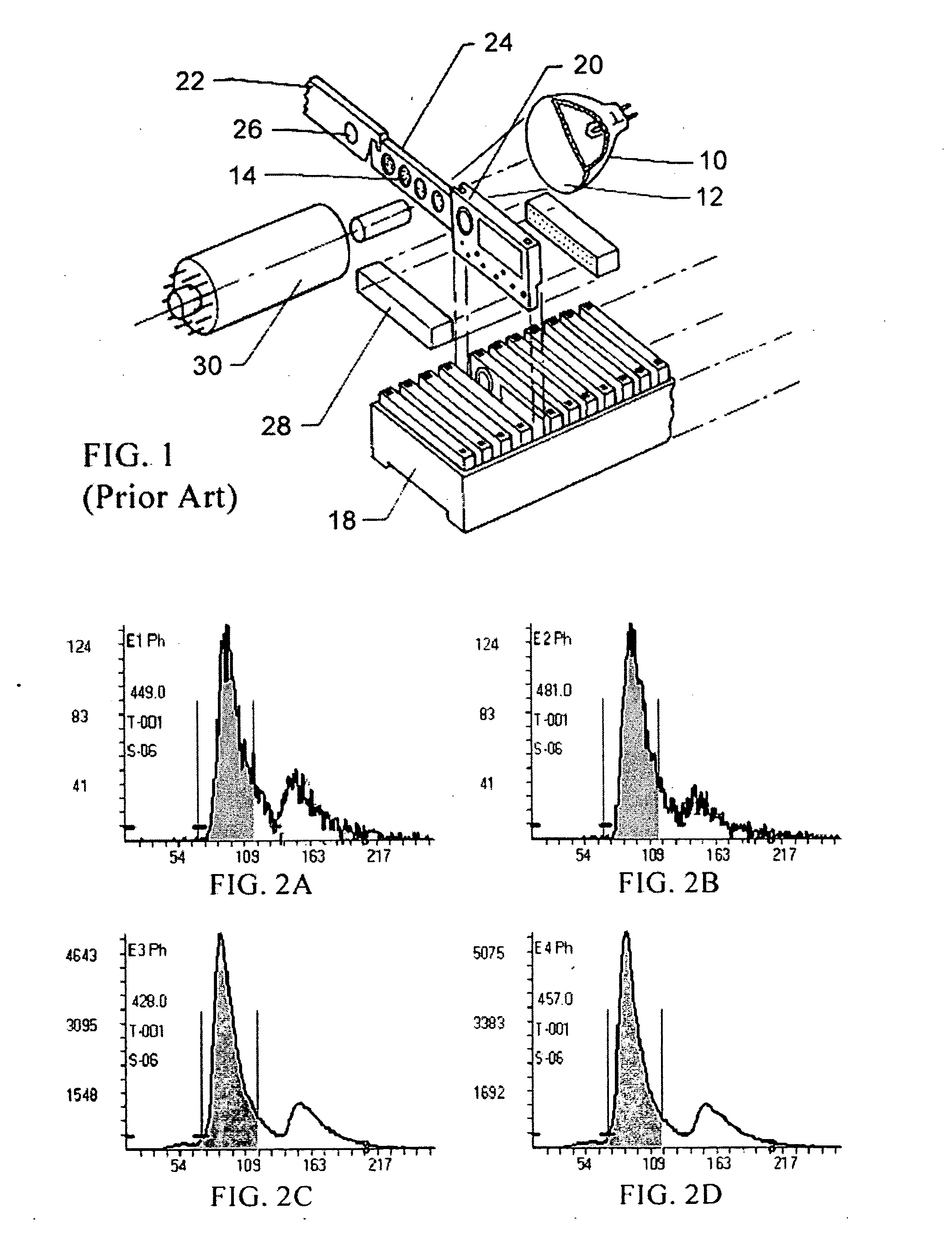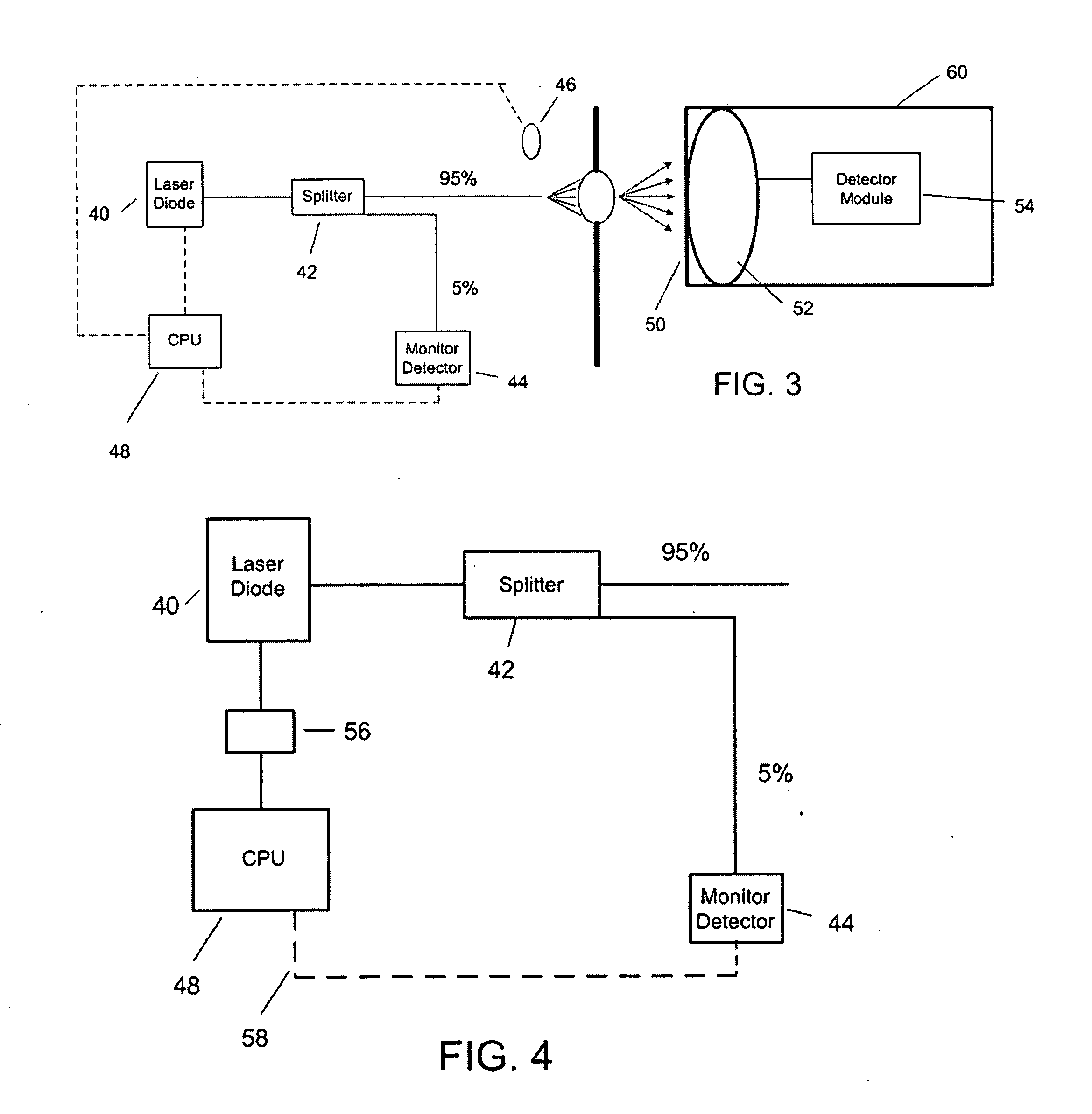Thermoluminescent reader system
- Summary
- Abstract
- Description
- Claims
- Application Information
AI Technical Summary
Benefits of technology
Problems solved by technology
Method used
Image
Examples
Embodiment Construction
[0044] Referring now to the drawing wherein like numbers represent like parts in each of the several figures, FIG.3 demonstrates a fiber pigtailed laser diode 40 connected by fiber cable to a splitter 42. The splitter 42 directs a predetermined percentage of the power from the laser diode 40 to heat a TL material or badge element 14 while a remaining percentage of power is channeled to a monitor detector or evaluation un
[0045] An infrared sensor 46 is connected to CPU 48. The infrared sensor 46 monitors the badge TL element 14 substrate temperature to ensure that all badge elements are heated to the same temperature. In so doing, the infrared sensor effectively helps to ensure a uniform heating profile of the badge elements. The analog output (mV / DEG C) from the infrared sensor is correlated by the CPU 48 with individual badge elements so that changes in the badge element correction factors can be evaluated. The infrared sensor is selected to have a field a view which is sufficient...
PUM
 Login to View More
Login to View More Abstract
Description
Claims
Application Information
 Login to View More
Login to View More - R&D Engineer
- R&D Manager
- IP Professional
- Industry Leading Data Capabilities
- Powerful AI technology
- Patent DNA Extraction
Browse by: Latest US Patents, China's latest patents, Technical Efficacy Thesaurus, Application Domain, Technology Topic, Popular Technical Reports.
© 2024 PatSnap. All rights reserved.Legal|Privacy policy|Modern Slavery Act Transparency Statement|Sitemap|About US| Contact US: help@patsnap.com










